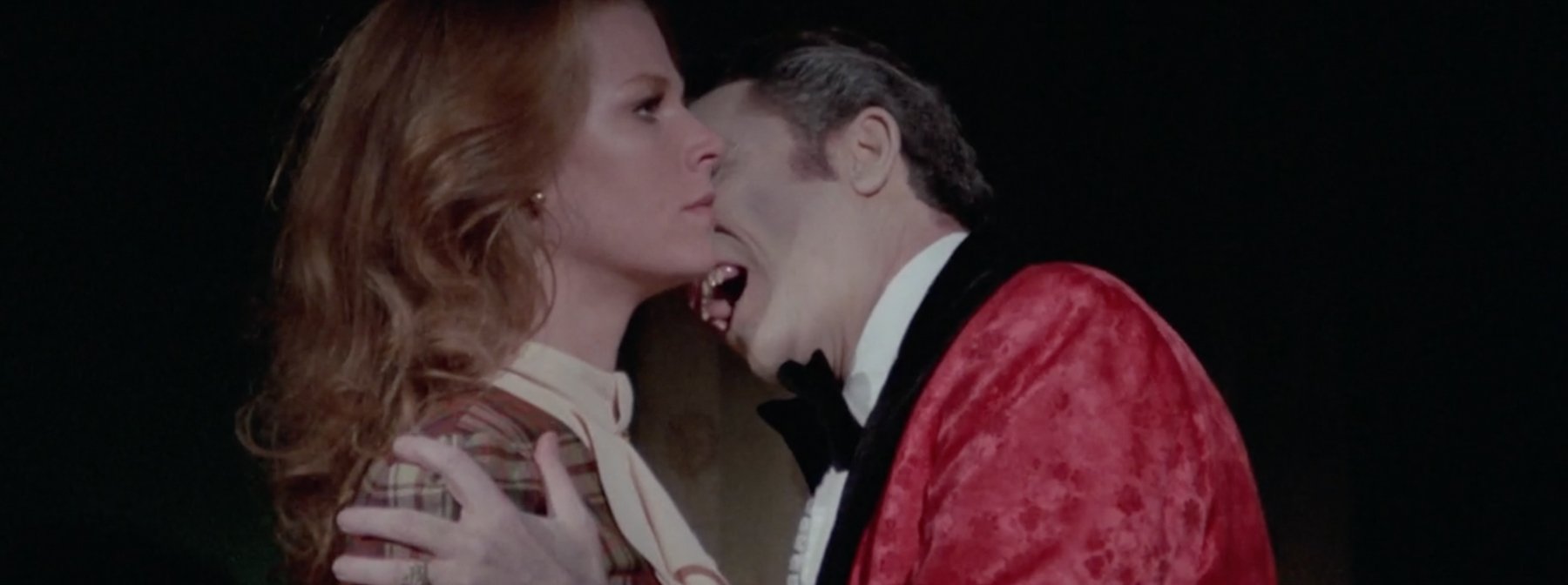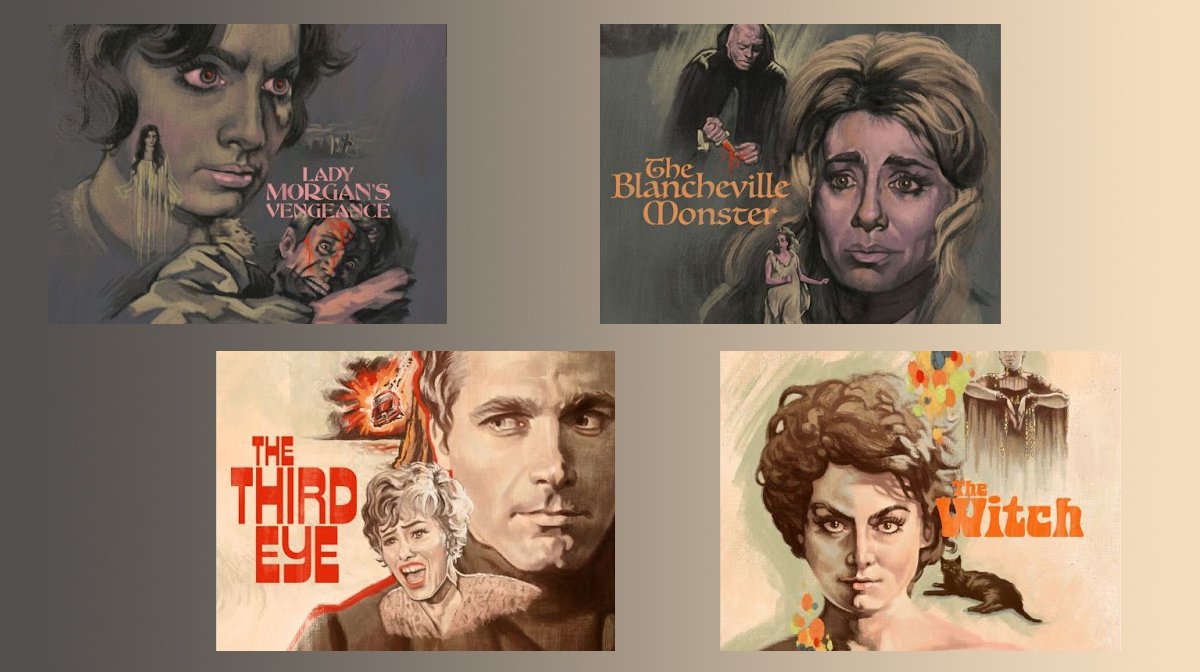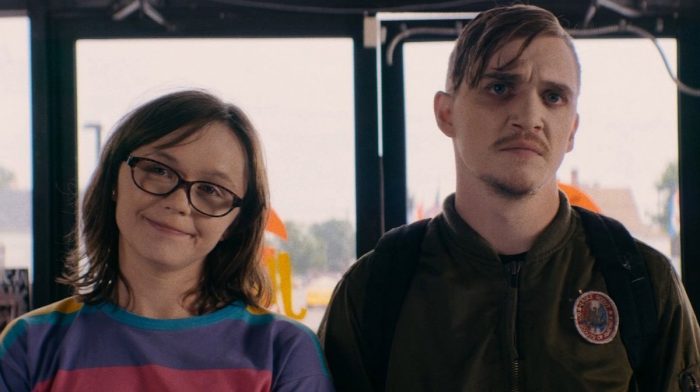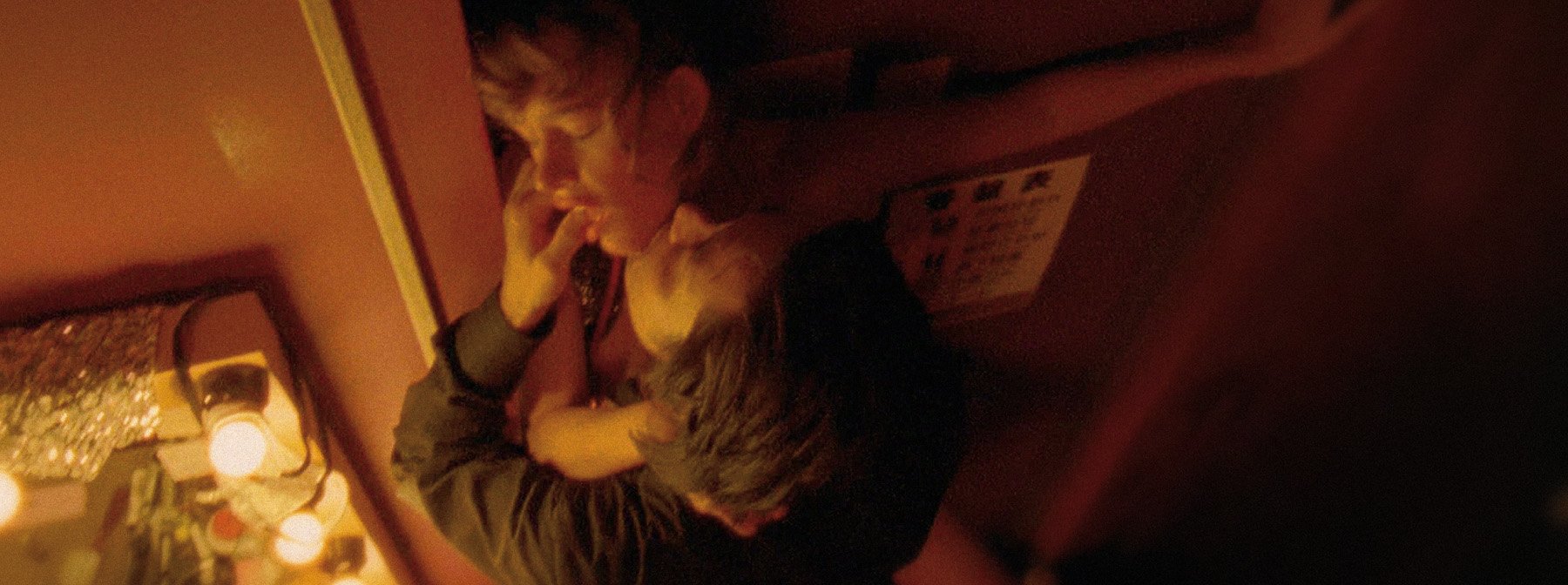By 1982, Italian horror auteur Dario Argento had already been crowned as the father of the giallo film, his career-making Animal Trilogy – The Bird with the Crystal Plumage (1970), Four Flies on Grey Velvet (1971) and The Cat O’ Nine Tails (1971) – followed by the one-two punch of another giallo, Deep Red in 1975, and his supernatural magnum opus Suspiria in 1977.
But with Suspiria’s much-hyped sequel Inferno falling flat at the box office in 1980, Argento returned to what he knew with 1982’s Tenebrae: a good old fashioned giallo, given a contemporary twist. In the time between Deep Red and Tenebrae, filmmakers like John Carpenter had taken inspiration from Argento’s stories of deranged killers run amok to inform the burgeoning American slasher subgenre. With Tenebrae, Argento in turn added a fresh dollop of blood red inspiration from this new wave of American horror to craft a neo-giallo film fresh for the 1980s.
Tenebrae remains one of Argento’s career highlights and a cult fan favourite. And for good reason; this twisted tale of an American crime novelist drawn into a string of murders that bear a striking resemblance to his own books remains one of Argento’s twistiest, turniest, bloodiest and sexiest movies. Now available on 4K UHD, it’s time to celebrate the ABC’s of Tenebrae.
A is for Anthony Franciosa
Argento might have wanted Christopher Walken for the lead character of Peter Neal originally, but the part finally went to American actor Anthony Franciosa. Learning the ropes on the Broadway stage, Franciosa would work with directors including Elia Kazan and George Cukor before starring in Italian productions such as 1962’s Careless with Claudia Cardinale and Italian horror icon Antonio Margheriti’s Web of the Spider in 1971 before collaborating with Argento on Tenebrae. Word has it they didn’t particularly get along, but the proof is in the pudding and Tenebrae remains one of Franciosa’s most beloved movies.
B is for Beach
Running through Tenebrae are a series of traumatic flashbacks by a character whose identity isn’t revealed until the film’s gripping finale. Filmed on Capocotta Beach just outside of Rome, these feature an unidentified man being sexually humiliated by a striking woman, played by transgender actress and activist Eva Robin’s.
C is for Crane Shot
If Tenebrae is famous for one thing, it is surely a jaw-dropping single-take two-and-a-half minute long crane shot where cinematographer Luciano Tovoli’s camera travels along the outside of a house, marking a flamboyant beginning of a sequence where not one but two women are gruesomely murdered. The shot is said to have taken three days to get right, and was worth every minute.

Scream Queen. Daria Nicolodi in Tenebrae.
D is for Daria Nicolodi
Actress and screenwriter Daria Nicolodi and Argento were of course a famous real-life couple at the time, and while they would separate in 1985, even by this stage Nicolodi was said to have been unhappy with the lack of credit she received for coming up with the original story that Argento’s previous film Suspiria was based on. While she had a starring role in Deep Red, she only wanted a small part in Tenebrae and was originally attached to the part of Peter’s ex-lover Jane. That part would eventually go to Veronica Lario, and Nicolodi instead would play Peter’s publisher’s assistant, Anne.
E is for Elsa
Ania Pieroni’s may not be a readily recognisable name for many Italian horror fans, but most would be very familiar with her work. Aside from playing the cat loving, intense stare enthusiast Mater Lachrymarum in Argento’s Inferno, Pieroni would have key roles in Lucio Fulci’s The House by the Cemetery (1981) and Nino Parenti’s Fracchia Contro Dracula (1985). In Tenebrae, she plays the unfortunate shoplifter Elsa, who gets away with pocketing the eponymous novel from a department store only to become one of the film’s killer’s earliest victims.
F is for Franco Fraticelli
With almost 200 screen credits to his name, editor Franco Fraticelli has worked with some of the giants of Italian cinema. He collaborated with the great Lina Wertmüller on a number of movies including her Oscar-nominated Seven Beauties in 1976, and would work on a number of films with Argento including The Bird with the Crystal Plumage, The Cat o’ Nine Tails, The Five Days (1973), Deep Red, Suspiria, Inferno, Opera (1987) and – of course – Tenebrae.
G is for Giallo
Marked by its particular incorporation of sex and violence into the mystery story, the Italian film subgenre (well, filone, to be precise) takes its name from the yellow (giallo) covers of the pulp crime novels by Italian publisher Mondadori. These are the kinds of stories that Tenebrae’s Peter Neal writes, including his latest book from which the film takes its title.
H is for Hounds of the Baskervilles
And speaking of literature, while Mickey Spillane and Agatha Christie get a shout out, one of the film’s most significant literary references is to Arthur Conan Doyle’s famous 1902 crime novel The Hound of the Baskervilles, where Peter tells a police investigator that “when you have eliminated the impossible, whatever remains, however improbable, must be the truth.”
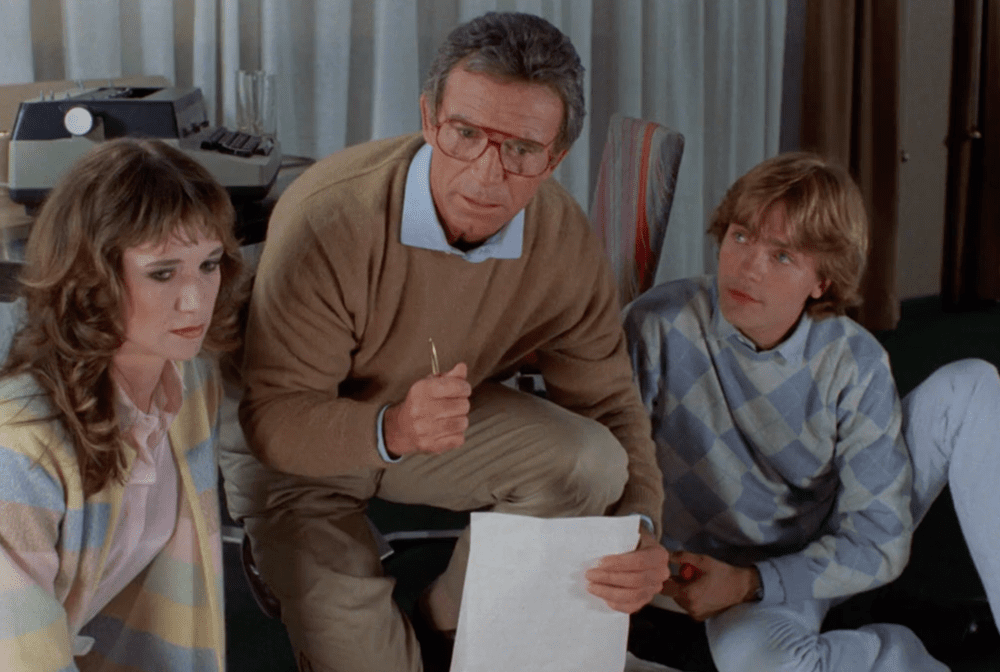
A close-knit team. Anne (Daria Nicolodi), Peter (Anthony Franciosa) and Gianni (Christian Borromeo) try to unravel the murderous mystery.
I is for Intern
It’s a thankless job for publishing intern Gianni (Christian Borromeo) who gets much more than he bargained for when he is tasked with assisting Peter during the latter’s visit to Rome to promote his new book. “You pay him more than promises, don’t you?”, Peter asks Gianni’s boss Bullmer (John Saxon), embodying the kind of proactive labour representation more unpaid interns could probably use, both then and today.
J is for Justice
French electro duo Justice brought Claudio Simonetti, Fabio Pignatelli and Massimo Morante’s main theme from the Tenebrae soundtrack to a whole new audience when it was heavily sampled by their epoch-defining dancefloor banger “Phantom” from the 2007 album Cross.
K is for Kills
Strangulation, stabbings and slashings top the list, with a feral Doberman giving it his very best in an attempt to add “mauled by dog” to the list.
L is for Lamberto Bava
Making a small uncredited cameo as an elevator repairman, Lamberto Bava would also act as the first assistant director on Tenebrae. The son of iconic Italian horror auteur Mario Bava, Lamberto would also go on to direct some of the country’s most famous cult horror films including Demons (1985) and Demons 2 (1986). He was also an assistant director on Argento’s previous film, Inferno.
M is for Mirella d’Angelo
Having worked with filmmakers ranging from Federico Fellini to Tinto Brass and co-starring with everyone from Jean-Paul Belmondo to Colin Firth, Mirella D’Angelo dazzles in Tenebrae as sassy lesbian journalist Tilde.
N is for New York
Tenebrae begins in the United States, establishing Peter’s status as an American writer who, as he tells it, has never been to Italy before. Shots including him bike-riding across a bridge and a lengthy scene in the John F. Kennedy International Airport were filmed on location.
O is for Orange
It’s hard to describe just how orange John Saxon’s Bullmer’s office is. Orange wall, orange door, orange chair., orange cardboard folders on his desk. It’s all damned orange.
P is for Poster
The striking image that would become the key art for Tenebrae‘s poster appears only in a blink-and-you’ll-miss-it moment in the film; it is shown briefly as a photograph drying in a darkroom during a brief survey of the as-yet unidentified killers lair, a souvenir from a previous kill. Showing a young woman lying backwards with her throat slit, the image was deemed too much for the British public and was quickly altered when complaints were received to change the slash to a red ribbon, complete with a nice little red bow.
Q is for Queer Representation
As numerous critics have noted, Argento has a complex history when it comes to queer representation. In films including Deep Red and Four Flies on Grey Velvet, there is a range of queer figures who have been read in both positive and negative ways, and certainly gender as a broader category across his films is much more malleable and elastic than it is in those of his peers. While lesbian characters do not exactly flourish in Tenebrae, with the casting as Eva Robin’s as an unforgettable femme fatale the film marks what is even today an altogether far too rare moment of trans visibility in horror.

Life’s a beach. Eva Robin’s strikes a pose in her iconic red heels.
R is for Red High Heels
Worn by Eva Robin’s, see above. For many viewers – male especially – the scene where she forcibly makes a man fellate her patent leather red high heel as she forces it into his mouth on the beach was surely a formative moment that many might still choose to deny.
S is for Scultpure
Death by.
T is for Tenebrae
The Latin word for “shadow” or “darkness”, some Argento fans may have got deceptively excited at the announcement of the film’s title upon first release, seemingly referencing one of the three mothers from his supernatural witch trilogy – Mater Tenebarum, the Mother of Darkness who lay at the heart of the trilogy’s middle entry, Inferno. But the connection ends there. But here, Tenebrae refers not only to Peter’s novel – used by the killer at times almost as a blueprint or manifesto to justify their own crimes – but is even used as a weapon, with pages from the book torn out and brutally forced into the mouth of an early unfortunate victim.
U is for Unsane
While released as Tenebrae (or Tenebre) in most regions, the film was named Shadow for its Japanese release, and – somewhat confusingly – Inferno in one Finnish release. Unsane remains a personal favourite, however, which was the title given to a heavily cut, pan-and-scanned version of the film released in the United States.
V is for Veronica Lario
There are two kinds of people: those who know Veronica Lario as Silviano Berlusconi’s ex-wife, and those who know her as Jane from Tenebrae. The latter are right.
W is for William Lustig
The New York scenes from the opening of the film were made with the help of an uncredited William Lustig working behind the scenes. Best known as the director of the 1980 horror banger Maniac, he had also worked with Argento on Inferno which similarly included location shooting in New York.
X is for X Rated
Copping a Category III in Hong Kong on release, Tenebrae also made the notorious list of so-called “video nasties” in the United Kingdom when it was first released on video in 1983. In Argentina, it received an X rating upon its first release in the country (later revised to an “18”).
Y is for Yves Montand
Detective Alteieri (Carola Stagnaro) got his autograph!
Z is for Żuławski
Released the year after Polish enfant terrible Andrzej Żuławski’s ground-breaking horror classic Possession, Argento was swept away by the look of the earlier Berlin-set horror film, and encouraged Tenebrae’s cinematographer Luciano Tovoli – who he had previously collaborated with on Suspiria – to shun their previous focus on bold, dazzling jewel colours and instead here on bright light and whites to give this film its signature look.

